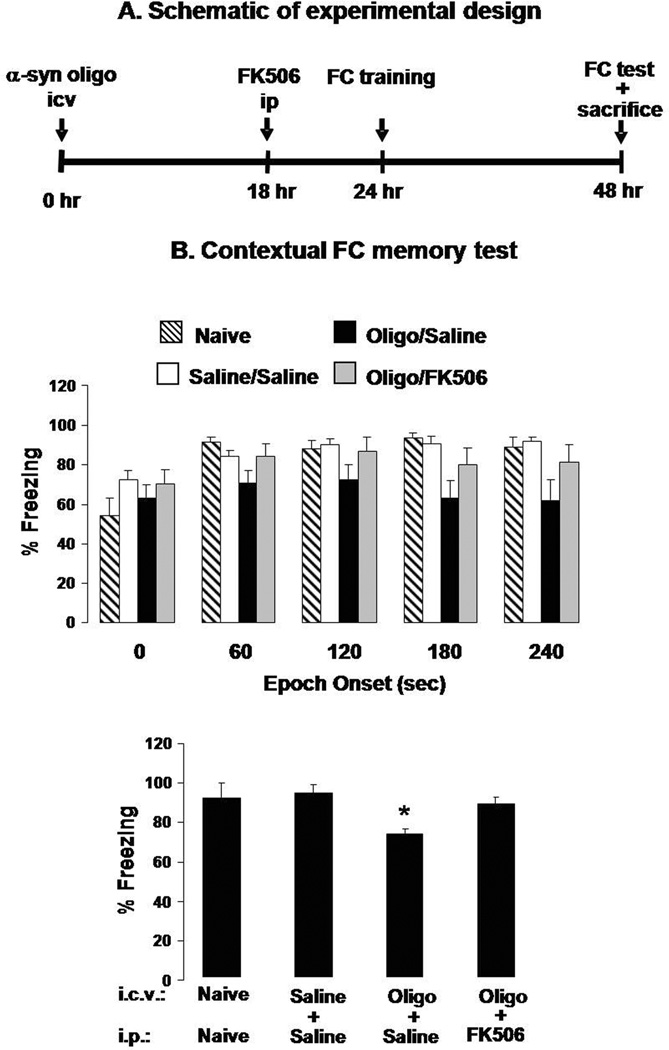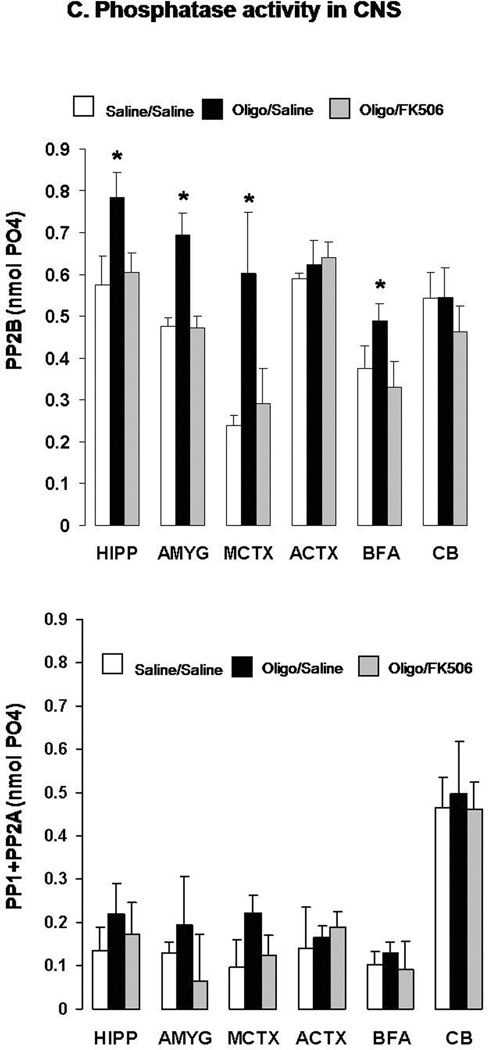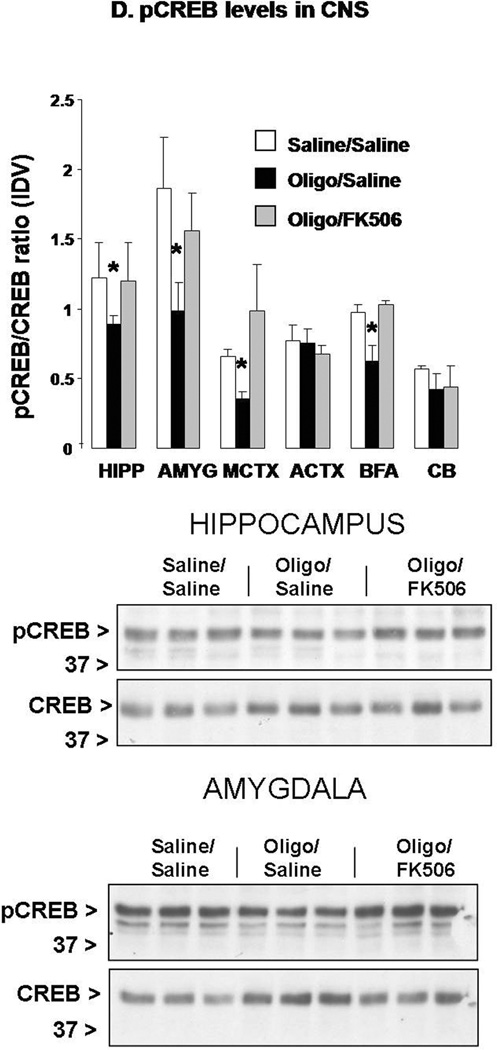Figure 6. An acute ICV injection of αSyn oligomers coincidentally induces CaN activity, decreases pCREB, and impairs FC memory in mice.
A. A schematic illustrating the experimental design used in these experiments. αSyn oligomers (100 pmole/3 µl/mice) were injected ICV 24 h prior to FC training (48 h prior to FC test and sacrifice). Prior to FC training half of the mice were treated with FK506 (10 mg/kg IP) and half received saline.
B. Contextual FC test scores in naïve mice and mice treated with saline ICV followed by saline IP (Saline/Saline) or αSyn ICV followed by saline ip (Oligo/Saline) or FK506 ip (oligo/FK506). Percent freezing (reflecting memory recollection) for each group is shown for each 60 sec block of a 240 sec test period (upper panel) or as cumulative data for the entire test period (lower panel). n=15 mice per group. **: p<0.01 vs. Saline/Saline or oligo/FK506 (ANOVA).
C. CaN (top) and PP1+PP2A combined activity (bottom) in the hippocampus (HIPP), amygdala (AMYG), medial cortex (MCTX), anterior cortex (ACTX), basal forebrain area (BFA) and cerebellum (CB) of the same mice sacrificed at the end of the FC memory tests.
D. Phosphorylated (active) CREB levels assayed by Western blot in the same brain areas from the same mice as shown in (D). Membranes were stripped and re-probed for total CREB and final values were expressed as ratio of pCREB/CREB calculated for each sample. Representative Western blots from this experiment detecting pCREB and CREB in the hippocampus and amygdala are shown at the bottom. n=5 mice per group (randomly chosen from the 15 per group used in behavioral studies). *: p<0.05 vs. Saline/Saline or oligo/FK506 (ANOVA).



